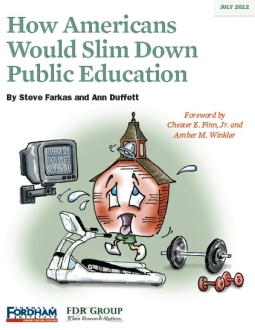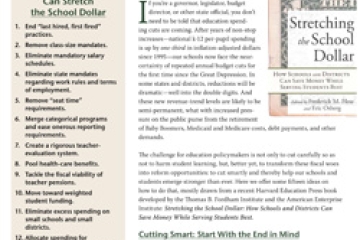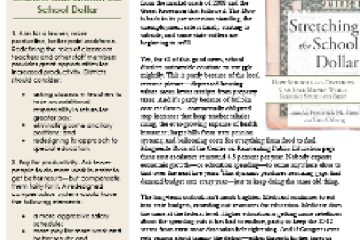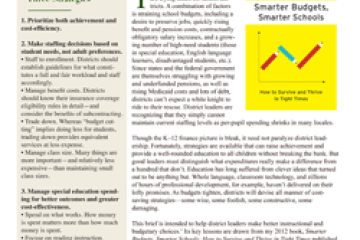Education budgets are tight and state and district leaders must make tough decisions about where and how to save. But is the public willing to accept cuts? Which ones? Where? According to the results of this pathbreaking survey, many Americans support dramatic changes to how school districts do business. From cutting central-office staff to reforming retirement benefits, this report outlines how voters think spending should be reduced—and what programs must be protected. What exactly did the authors find?
The public grasps the severity of the situation
Sixty-two percent of respondents described their local district’s current financial situation as very or somewhat difficult, with 77 percent of these individuals reporting that the financial challenges will last for quite a while.
Many support change
Almost half of respondents (48 percent) said that, if their own district were facing a serious budget deficit, the best approach would be “to cut costs by dramatically changing how it does business.”
Reformers have their work cut out for them
While the public is amenable to change, many of education reformers’ pet proposals face skepticism, particularly reducing non-teaching staff and tapping the potential of digital learning.
Not all cuts are equally popular
What policies had the most public support?
- Shrink the administration. A broad majority (69 percent) supports “reducing the number of district level administrators to the bare minimum” as a good way to save money because “it means cutting bureaucracy without hurting classrooms.”
- Freeze salaries to save jobs. Nearly six in ten (58 percent) say freezing salaries for one year for all district employees is a good way to save money “because the district can avoid laying off people.”
- If teachers must be laid off, base it on their effectiveness, not years of service. About three in four (74 percent) say that those with poor performance should be “laid off first and those with excellent performance protected”; only 18 percent would have “newcomers laid off first and veteran teachers protected.”
Download the full report to learn more.





